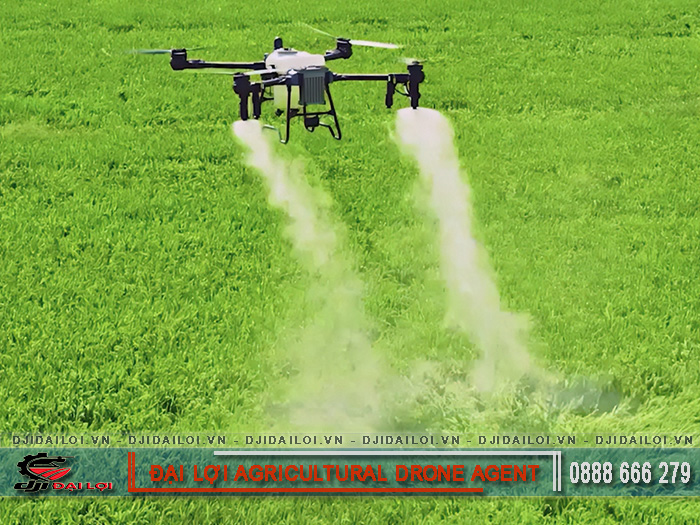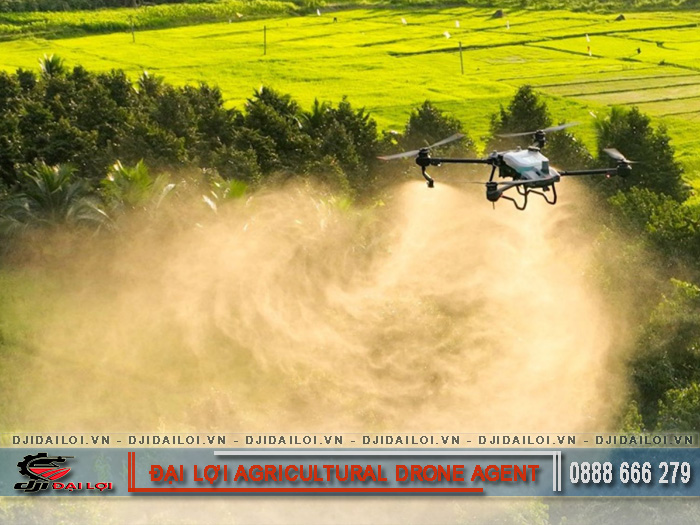
A low-cost agricultural drone is an unmanned aerial vehicle (UAV) designed for spraying pesticides, fertilizers, or seeding, with an investment cost 20–40% lower than premium models. These products aim to make modern technology more accessible to farmers while maintaining productivity and spraying efficiency.
In the low-cost agricultural drone market, it’s important to distinguish true affordability-products optimized for production costs but still meeting technical standards-from poor-quality cheap drones, which cut corners on components, lack flight safety certification, or have unclear origins.
A genuine low-cost agricultural drone typically includes:
In contrast, “super cheap” models often lack radar, use low-quality batteries, and come without service centers.
The growing popularity of affordable spraying drones is driven by three main factors:
As a result, current low-cost agricultural drones can now handle 70–80% of the workload of premium models, expanding access to drone technology for many farming regions.
To avoid buying unverified products, farmers can use this checklist to identify a trustworthy low-cost agricultural drone:
Choosing a reputable low-cost drone helps users save 30–40% of costs while maintaining precise, consistent spraying performance.
A common misconception that discourages investment. In reality, genuine low-cost drones use high-strength composite or carbon materials with IPX6 waterproof protection, ensuring stable operation in humid agricultural environments. Their average body lifespan ranges from 3–5 years with proper maintenance.
Contrary to old beliefs, many modern low-cost drones feature centrifugal or dual-pressure pumps that distribute liquid evenly. Average spraying capacity reaches 20–25 hectares per day-around 80–90% of premium models like the T40.
The main difference lies in shorter flight time and fewer advanced automation sensors.
In fact, affordable drones help small cooperatives reduce labor costs by 30–50% and increase spraying productivity by 4–5 times compared to manual methods.
With prices ranging from VND 120–180 million, farmers can recover their investment within 2–3 crop cycles. The key is choosing a model suited to the farm size with clear warranty policies.
Many users confuse “cheap” with “low quality.” In reality, quality depends on:
A low-cost drone, when properly maintained and flown skillfully, can achieve productivity close to premium models while keeping operational costs significantly lower.
In recent years, budget UAVs have advanced significantly thanks to smart control chips and ultrasonic sensors. Affordable agricultural drones now include radar obstacle avoidance, GPS RTK positioning, and automatic altitude control-ensuring greater flight stability and spraying accuracy across various terrains.
|
Criteria |
Low-cost drone |
Premium drone |
|---|---|---|
|
Tank capacity |
10–16L |
20–40L |
|
Spraying area/hour |
3–4 ha |
5–6 ha |
|
Automation |
Semi-automatic |
Fully automatic |
|
Obstacle avoidance |
Basic (1–2 directions) |
360° all-around |
|
Average price |
VND 120–200 million |
VND 300–500 million |
Results show that for farms under 20 hectares, low-cost spraying drones can meet production demands effectively without excessive investment.
Low-cost drone batteries typically last 300–500 charge cycles (1.5–2 years).
Operating costs range from VND 30,000–50,000 per hectare-60% cheaper than manual spraying.
Thus, costs remain low if users follow proper charging and maintenance procedures.
These models are well-rated for their stability, affordability, and local maintenance support.
Low-cost agricultural drones are ideal for small farms (5–20 ha) or cooperatives beginning to adopt UAV technology. Affordable pricing and simple operation allow independent use without a professional tech team.
Best suited for flat terrain, small plots, and low crops such as rice, corn, and vegetables.
For areas with many obstacles or tall crops, choose models with multi-directional radar for safe operation.
Use this formula to estimate payback time:
Total investment / Savings per crop = Payback period (in crops)
Example: A VND 150 million drone saving VND 25 million per crop will break even after about six crops (~2 years).
With regular maintenance, its lifespan can extend to 4–5 years, maximizing profit.
When these factors are met, affordable spraying drones offer a practical, cost-effective path toward modern agricultural automation.
A major risk lies in buying drones without official warranty, safety certification, or standard spare parts. Counterfeit models often copy designs but perform poorly, posing flight hazards.
According to Vietnamese UAV centers, over 60% of drone fires and crashes involve uncertified devices. Always request a VAT invoice and official warranty to protect your rights.
Illegally imported drones often lack compatible spare parts, making repairs expensive or impossible.
For example, mismatched motors, propellers, or control boards can cause instability or failure.
Lack of local technical teams also leads to long maintenance delays-directly affecting crop schedules. Hence, prioritize brands with authorized distributors and service centers in Vietnam.
Cheap drones may struggle in strong wind, heat, or muddy fields. Models without radar or RTK positioning often drift off course, reducing spray precision.
In regions like the Central Highlands or the Mekong Delta, drones with weak plastic bodies tend to crack or absorb moisture, damaging circuit boards.
Following these steps helps avoid counterfeit products and ensures a safe, cost-effective purchase.
Choose a brand with service centers in Vietnam for easier part replacement, software updates, and technical support.
Brands such as DJI, XAG, Hylio, and Dai Loi UAV have official branches or partners in Vietnam offering certified parts and expert teams.
|
Specification |
Small-scale model (5–10 ha) |
Large-scale model (20–50 ha) |
|---|---|---|
|
Spray tank capacity |
10–16L |
20–30L |
|
Spray speed |
3–4 ha/hour |
5–6 ha/hour |
|
Battery type |
20,000–25,000mAh |
30,000–40,000mAh |
|
Automation features |
GPS waypoint flight |
Full RTK automation |
Choosing the right configuration optimizes costs, spraying efficiency, and equipment lifespan.
Some companies and banks now offer low-interest loans (0–4%/year) for purchasing agricultural drones, making investment easier.
Dealers also provide trade-in and free maintenance programs to reduce long-term costs.
This is a great opportunity to access UAV technology without heavy upfront expenses.
When reviewing price lists, note:
For example: a VND 150 million drone with VND 40,000/ha operating cost and 25 ha/day capacity can break even in about five crop cycles. This helps buyers make data-driven decisions.

Experts note a shift in the low-cost drone market from basic configurations to models integrating AI and 360° obstacle-avoidance radar.
This improves stability in complex environments and reduces flight risks.
Vietnam is expected to reach over 50,000 agricultural drones in the near future, with most in the low to mid-range segment.
Low-cost drones require 40–60% less investment while achieving 80–90% of the spraying performance of high-end models.
For small and medium-scale farms, they are a cost-effective solution to cut labor, save time, and boost productivity.
However, for large plantations or fully automated operations, premium drones still hold advantages in stability and coverage.
Experts view low-cost agricultural drones as a bridge helping farmers access modern UAV technology.
With proper maintenance, they can last 3–5 years.
Moreover, as the UAV ecosystem expands (soil sensors, NDVI cameras, automated mapping), affordable drones are becoming smarter and more compatible with agriculture 4.0 strategies.
Low-cost agricultural drones clearly stand out for their affordability, ease of use, and suitability for small farms.
However, they have fewer automation features, shorter battery lifespan, and higher risk if purchased from unverified sellers.
Summary:
If you are a small farmer or a new cooperative, investing in a low-cost spraying drone is a smart move - as long as you choose a reputable brand, receive proper training, and maintain the equipment regularly.
Don’t focus solely on price; evaluate total ownership cost, performance, and long-term reliability. With the right balance, affordable drones can be highly worthwhile investments delivering real profits.
If you choose a verified, warrantied brand, a low-cost spraying drone can be an efficient and economical solution. But choosing an unverified one could mean “losing money and losing your crop.” Invest smart - not just cheap.
On average, 3–5 years with proper maintenance, battery care, and cleaning. Correct usage can extend lifespan by 1–2 years without reducing performance.
Only if it has a clear origin, valid warranty, and recorded flight hours. Otherwise, risks of sensor failure, worn-out batteries, and software issues are high-often costing more than buying new.
Request a real flight test, check spraying pressure, sensors, and serial number. Genuine drones have verified QR codes, automatic software updates, and technical support in Vietnam.
About 5–10% of the drone’s value per year, covering battery checks, pumps, and propellers. Regular maintenance ensures stable performance and prevents breakdowns mid-season.
Some models allow upgrades such as radar, sensors, or improved spray nozzles to enhance productivity. Always follow the manufacturer’s guidelines to ensure safety and maintain warranty coverage.